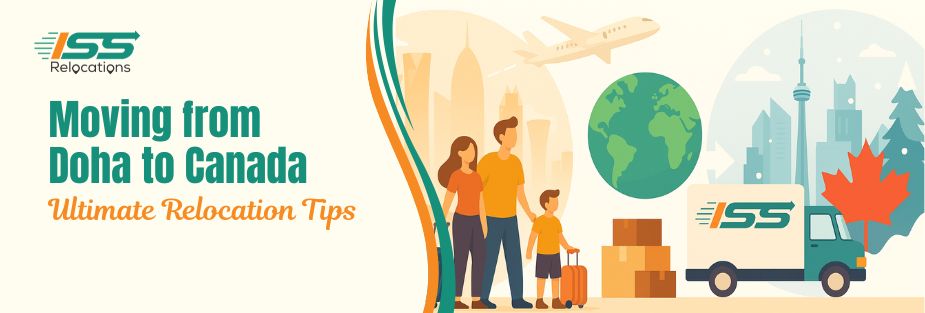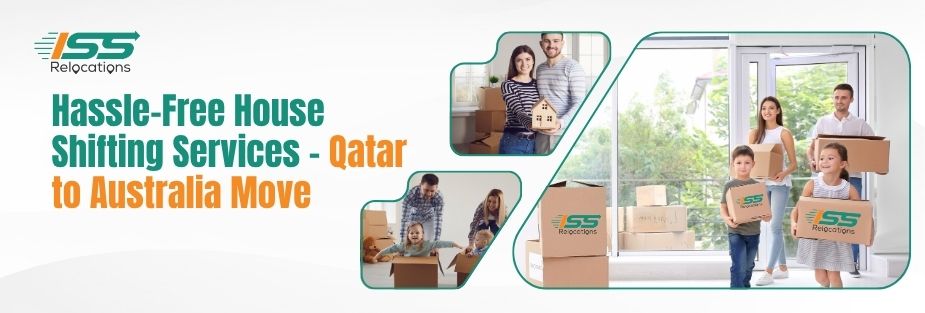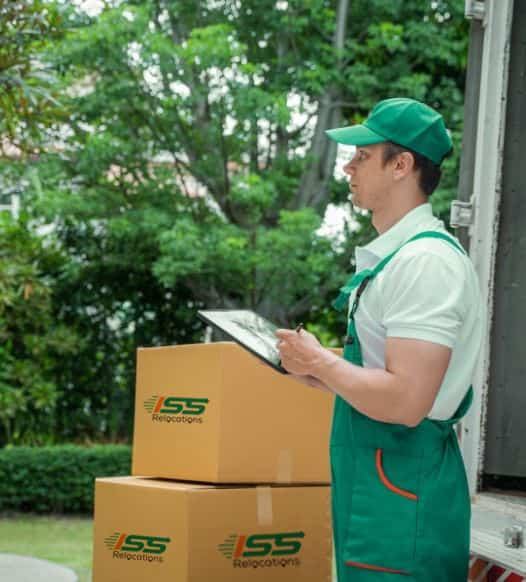
The claims process for transit insurance in the moving industry: Complete Guide
Moving to a new place can be an exciting experience. However, it can also be a stressful one, especially if you are moving with valuable possessions or heavy machinery. During transit, accidents and mishaps can occur, leading to damages or loss of items. To protect against such risks, customers can opt for transit insurance. In this blog post, we will discuss the importance of transit insurance in the moving industry, the role of ISS Relocations in providing transit insurance, and the claims process involved.
Understanding Transit Insurance
Transit insurance is an essential type of insurance for anyone who is moving their belongings from one location to another. It provides coverage for loss or damage to the goods being transported during the move. Without a process for transit insurance, customers may have to bear the entire cost of any loss or damage to their items, which can be a significant financial burden.
Transit insurance policies typically offer coverage for a range of risks that can occur during transit, including theft, loss, damage, or destruction of items being transported. Depending on the type of transit insurance policy, coverage may also be available for delays in transit, storage, and other related risks.
There are various types of transit insurance policies available, depending on the specific needs and requirements of customers. Some common types of transit insurance policies include:
All-risk coverage: This type of policy offers the most comprehensive coverage and protects against loss or damage to items being transported due to any reason, except for exclusions listed in the policy.
Named perils coverage: This type of policy provides coverage only for specific perils listed in the policy, such as fire, theft, or collision.
Restricted coverage: This type of policy offers limited coverage and typically includes specific exclusions that customers should be aware of.
In addition to these types of policies, customers can also choose between single transit insurance policies, which cover a single move, or annual transit insurance policies, which cover multiple moves within a specified period.
The benefits of transit insurance go beyond financial protection. Transit insurance also provides peace of mind to customers, knowing that their belongings are covered in case of any unforeseen events during transit. It can also help build trust between the customer and the moving company, as it shows that the company is taking steps to ensure the safe and secure transport of their belongings.
In summary, the Process for transit insurance is a crucial aspect of the moving industry, offering protection against a range of risks that can occur during transit. Customers can choose from various types of policies, depending on their needs and budget, and can benefit from the financial protection and peace of mind that transit insurance provides.
The Claims Process for Transit Insurance
The claims process for transit insurance involves several steps, starting with notification of the claim and ending with the settlement of the claim. Here are the typical steps involved in the claims process for transit insurance:
Notification of the claim: Customers should notify their transit insurance provider as soon as possible after discovering any loss or damage to their items during transit. This notification should include details of the items, the nature of the loss or damage, and any supporting documentation, such as photographs or receipts.
Documentation: Customers will be required to provide documentation to support their claim, such as photographs of the items before and after transit, receipts for the items, and any other relevant documentation.
Investigation: Once the transit insurance provider has received the claim and supporting documentation, they will investigate the claim to determine its validity and the extent of the loss or damage. This may involve an inspection of the items, interviews with the customer, and consultation with third-party experts.
Settlement: Once the investigation is complete, the transit insurance provider will make a settlement offer to the customer. This offer will typically include compensation for the loss or damage to the items, as well as any associated costs, such as shipping or storage fees. The customer can either accept the settlement offer or negotiate for a higher amount.
The role of ISS Relocations in the claims process is to provide support to the customer and act as a liaison between the customer and the transit insurance provider. ISS Relocations can assist customers in preparing their claim and providing supporting documentation, as well as communicating with the transit insurance provider on their behalf. This can help ensure a smoother and more efficient claims process for the customer.
It is important for customers to be aware of the timelines involved in the claims process for transit insurance. In general, customers should notify their transit insurance provider of any loss or damage as soon as possible and provide all required documentation promptly. The transit insurance provider will then have a specified period, typically 30-60 days, to investigate the claim and make a settlement offer. Customers should also be aware that delays in filing a claim or providing required documentation can lead to delays in receiving compensation.
In summary, the claims process for transit insurance involves several steps, starting with notification of the claim and ending with the settlement of the claim. Customers can benefit from the support of ISS Relocations in preparing their claim and communicating with the transit insurance provider. It is important for customers to be aware of the timelines involved in the claims process and to provide all required documentation promptly to ensure a smooth and efficient process.
Common Issues in the Claims Process
While the claims process for transit insurance is designed to be straightforward and efficient, there are some common issues that customers may encounter. Being aware of these issues can help customers avoid them or address them effectively if they arise.
Delayed or denied claims: One common issue in the claims process is delays in receiving compensation or outright denial of the claim. This may be due to incomplete or inaccurate documentation, disputes over coverage, or delays in the investigation process. To avoid delays or denials, customers should ensure they provide all required documentation promptly and accurately, and they should follow up with the transit insurance provider regularly to check on the status of their claim.
Disputes over coverage: Another issue that can arise in the claims process is disputes over coverage. This may occur if the transit insurance policy does not cover the type of loss or damage suffered by the customer, or if there is disagreement over the cause of the loss or damage. To avoid disputes over coverage, customers should carefully review their transit insurance policy before filing a claim to ensure they understand the coverage provided. They should also be prepared to provide detailed documentation to support their claim.
Unsatisfactory compensation: Customers may also be dissatisfied with the amount of compensation offered by the transit insurance provider. This may occur if the transit insurance policy limits the amount of compensation for certain types of loss or damage, or if the transit insurance provider undervalues the items in question. To avoid unsatisfactory compensation, customers should ensure they have a clear understanding of the value of their items and should provide all supporting documentation, such as receipts and photographs, to demonstrate their value.
To address these common issues, customers can take several steps. First, they should carefully review their process for transit insurance policy and ensure they understand the coverage provided. They should also be diligent in documenting their items before and after transit, taking photographs and keeping receipts. If an issue arises during the claims process, customers should communicate clearly and promptly with the transit insurance provider and be prepared to provide additional documentation or negotiate for a higher settlement offer.
In summary, the claims process for transit insurance can sometimes be complicated by common issues such as delayed or denied claims, disputes over coverage, and unsatisfactory compensation. To avoid these issues, customers should carefully review their transit insurance policy, document their items thoroughly, and communicate clearly and promptly with the transit insurance provider during the claims process.
Best Practices for Filing a Claim
To ensure a smooth and successful claims process, customers should follow some best practices when filing a claim for transit insurance. Here are some tips to help customers prepare for the claims process:
Prepare for the move: Before the move, customers should take inventory of all items that will be transported, including their value and condition. They should also take photographs of any valuable or fragile items and keep receipts for all items. This will help customers provide detailed documentation if they need to file a claim.
Document your items: During the move, customers should keep track of their items and take note of any damage that occurs. They should take photographs of any damage and keep any relevant receipts or documentation. This documentation will be essential if the customer needs to file a claim.
File a claim promptly: If customers notice damage to their items, they should file a claim with the transit insurance provider as soon as possible. Most transit insurance policies have a time limit for filing claims, so customers should make sure to file within that time frame to ensure they are eligible for compensation.
Follow up on your claim: Customers should stay in touch with the transit insurance provider throughout the claims process to check on the status of their claim. If any additional documentation is needed, customers should provide it promptly to avoid delays.
In addition to these best practices, customers should also be aware of their rights and responsibilities when filing a claim for transit insurance. They should review their transit insurance policy to ensure they understand the coverage provided and any exclusions or limitations. Customers should also be prepared to provide detailed documentation to support their claim and communicate clearly and promptly with the transit insurance provider if any issues arise.
In summary, customers can ensure a smooth claims process by following best practices such as preparing for the move, documenting their items, filing a claim promptly, and following up on their claim. By taking these steps and staying informed about their rights and responsibilities, customers can protect their belongings during transit and receive the compensation they deserve in the event of loss or damage.
Conclusion
Transit insurance is an essential aspect of the moving industry, as it helps protect against unforeseen risks that can occur during transit. Customers can choose from various types of transit insurance policies, depending on their needs and budget. The claims process for transit insurance typically involves several steps, including notification of the claim, documentation, investigation, and settlement. Customers can work with their transit insurance provider and ISS Relocations to ensure a smooth claims process and avoid common issues such as delayed or denied claims and disputes over coverage. By following best practices such as preparing for the move, documenting items, filing claims promptly, and following up on claims, customers can increase their chances of receiving compensation promptly and satisfactorily. At ISS Relocations, we understand the importance of transit insurance and are committed to providing our customers with the support they need during the claims process.
Plan Stress-free Move with Top Moving Company in UAE - ISS Relocations

Frequently Asked Questions
What are the steps in the insurance process?
The steps in the insurance process typically include: 1) Identifying the risk, 2) Choosing the appropriate coverage, 3) Filing the claim, and 4) Settling the claim. ISS Relocations helps you navigate the claims process for transit insurance, ensuring all documentation is in order and your claim is handled efficiently, protecting your goods during transport.
What are the four steps in the insurance process?
The four steps in the insurance process are: 1) Application, 2) Underwriting, 3) Issuance of the policy, and 4) Claim settlement. ISS Relocations assists with these steps, ensuring you are properly insured for transit and that any claims you need to make are handled professionally and promptly, so your items are protected throughout the shipping process.
How does the insurance process work?
The insurance process works by assessing the risks involved, determining the appropriate coverage, and then filing claims if any damage or loss occurs. With ISS Relocations, the process for transit insurance is simplified, ensuring your belongings are covered while being shipped and that any claims are resolved quickly and fairly.
What is transit in insurance?
Transit in insurance refers to coverage for goods while they are being transported from one location to another. This coverage protects against potential risks such as theft, damage, or loss. ISS Relocations provides transit insurance, giving you peace of mind during your move and ensuring your items are fully covered.
Why do I need transit insurance?
You need transit insurance to protect your belongings during shipping, ensuring that you are financially covered in case of damage, theft, or loss. ISS Relocations offers reliable transit insurance options, ensuring that your items are safeguarded throughout their journey to their destination.
Why is goods in transit insurance important?
Goods in transit insurance is important because it provides financial protection against unforeseen events like accidents, natural disasters, or theft that can occur during transportation. ISS Relocations offers comprehensive goods in transit insurance to ensure that your items are protected, whether shipping locally or internationally.
How important is shipping insurance in UAE?
Shipping insurance in the UAE is crucial due to the high volume of international trade and the risks associated with transporting goods across various shipping routes. ISS Relocations ensures that your goods are covered under reliable shipping insurance, giving you confidence that your items are protected throughout their transport to and from the UAE.
Moving Company - Recent Blog
Stay informed and prepared for your next move with our latest blogs on moving services in the UAE. From expert packing tips to international relocation guides, ISS Relocations brings you up-to-date insights to make your moving experience smoother, safer, and stress-free.










